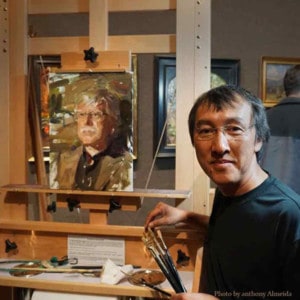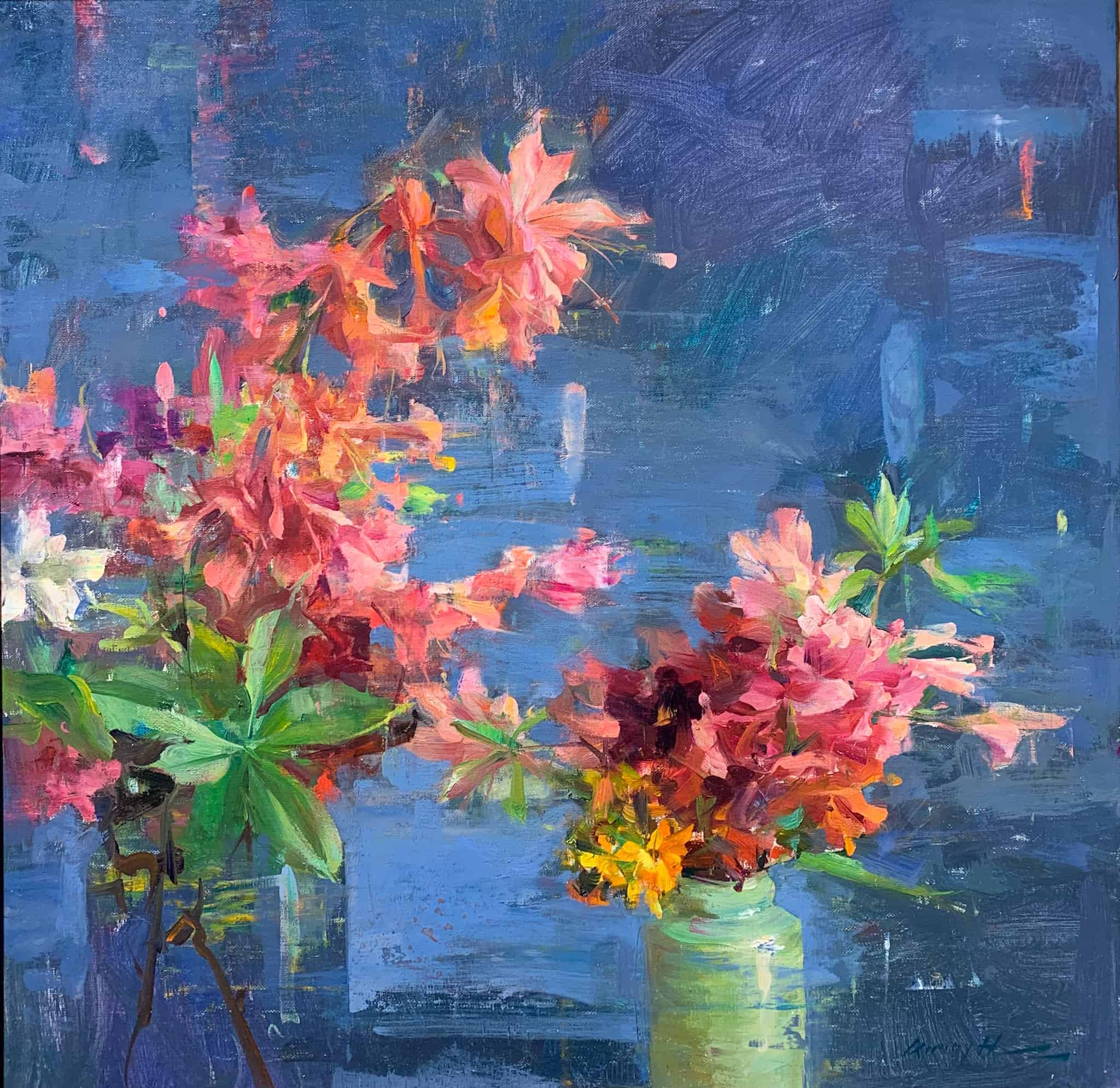Introducing Guest Artist Quang Ho

What is the first thing that you think or do when you wake up in the morning?
“Laughs, you know, it’s really great: I am so excited to get up in the morning. I have so many things that I love doing—not just painting! I am learning to do wood-working, which is a new thing for me, but I am learning. I meditate, and right now I am learning so much about the nature of my own mind. Each day I look forward to taking time to sit and be quiet. This is difficult to do right now, with so many things going on, so I am trying to find a wakeful state while doing each task. So, the first thing that happens when I wake up, really, is that I am immediately aware of the noise in my head. I am aware of it and don’t let it control me. And then the excitement comes.”
“And of course, this is separate from painting. I have so many ideas for paintings that I haven’t really even gotten to play with.”
What makes you whole?
“Laughs, wow why do you think I am whole?! Well, I am seeking to be whole. That is such a great question. I can tell you this—what I have thought makes me whole in the past has been entirely erroneous. What really brings me peace is deeply recognizing that who I thought I was wasn’t true at all. Because it wasn’t true, why let it control how I feel or give it any substance? This realization is huge, it allows me to be empty and respond to things as they really are moment to moment, not responding to some figment of my imagination in my stupid head! Wholeness comes from not knowing, and yet there is a deep knowing. In a way, there is only wholeness, we just don’t recognize it.”
Was there a pivotal moment or experience in your life when you decided to pursue art as a career?
“There was never a moment where I doubted that I was going to be an artist. I was always the best in any class I was in and won statewide art competitions. When I got to my senior year, I had no idea how to make a career as an artist, so I went to a commercial art school. And then after three or four years I transitioned into painting as a fine artist.”
Do you have any personal reflection you would like to share about life in “quarantine,” or how you have experienced recent times as an artist?
“This is such a unique time—it is forcing us all to step back from what we all thought was normal. Change is the only thing that is really constant. And we live like it is something that we don’t want. We desire a controlled and comfortable space. Learning is always a little bit uncomfortable. I believe that we will come through this and be better for it, but also scarred, full of good scars. My whole life, I have constantly had deadlines to meet. This is the first time when I get to wake up in the morning and do what I want to do, which has been so beautiful. If you could take this time, and not have to worry about paying the bills, what would you do with this time?”
Could you tell me about your relationship with different mediums, and those you used to paint flowers for this exhibition?
“I started painting with oils when I was 19. I used watercolor and acrylics mostly in art school. As an illustrator pastel was my medium. I haven’t touched pastels in forever, but it is a terrific medium. Copper has been used throughout history, of course. A friend of mine had done some copper panels and roughed them up by sandblasting them and she sent me some samples. I have some and love the way the paint goes on. I usually use oil primed linen, but for Spring Cuttings I painted on copper. I always love working on copper when I use it. It can take the smallest of detail.”

What is a flower?
“I don’t know what a flower is, but I can tell you that I never really looked at a flower until I started painting them. And then I noticed how unique each individual flower is. You can go through life thinking you know what a flower is. Unfortunately, our human mind does this—we carry around generalized ideas of what we think things are. Until you become observant without a thought of what a flower is, you won’t know. A flower, to me, is a very unique and specific shape. Each flower is as unique and beautiful as any one’s face. So, I could look at a rose, I could have an idea about what a rose is, but I won’t really know until I study it, since every rose is different.”
What made you want to participate in this exhibition?
“My friend Tim Newton, and of course I know of Kathryn’s work and respect her work. And, you know, I love painting flowers, really. And I hadn’t done one in a long time.”
Why is this meaningful to you, and what do you seek to communicate in these works?
“Spring Cuttings was an exercise, the first of the spring flowers that I cut and stuck in some small vases. When I had them in my studio, it wasn’t a grand arrangement—they were just sitting on the table and I thought—‘that’s a painting.’ In this painting, I put down one brushstroke at a time. I put one down and then would mix a new piece of color. I thought about every brushstroke being uniquely specific and has a different size shape and color than any other. I responded to what I saw and laid down pieces of color, abstracting the flowers down to little pieces of paint.”
Referring to Azaleas and Spring Cutting, Quang says, “The larger one is very different—like a color field…the blue is modeled with scratches, with air and depth in it. The flowers are painted in a way where I wasn’t interested in depth or the illusion of space. In the flowers, the texture pushes them back and forth. It is about the nuances on the surface.”


